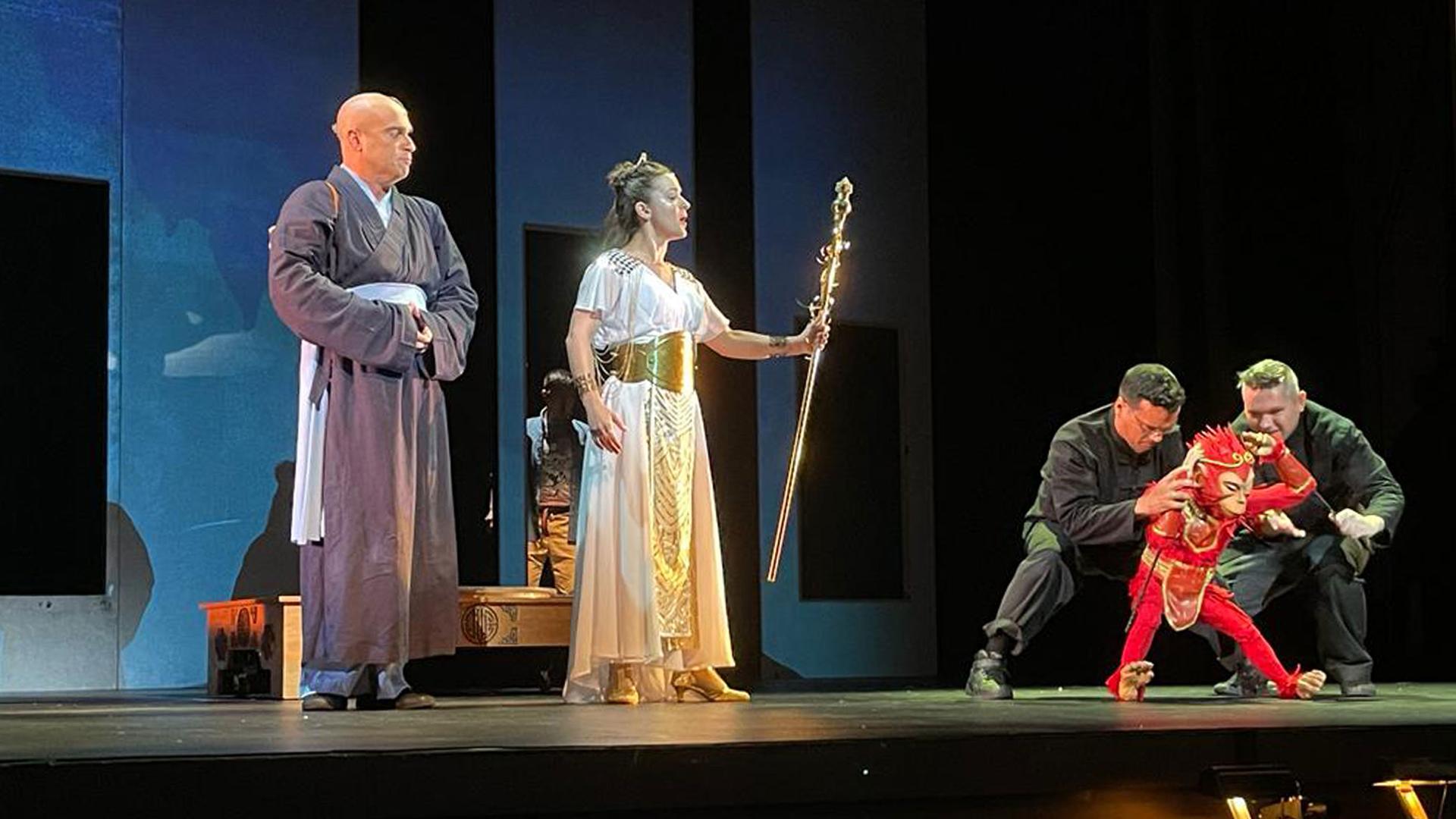“Monkey King: A Journey to the West” is a 16-century Chinese folk tale that became popular across the East Asia region over the years.
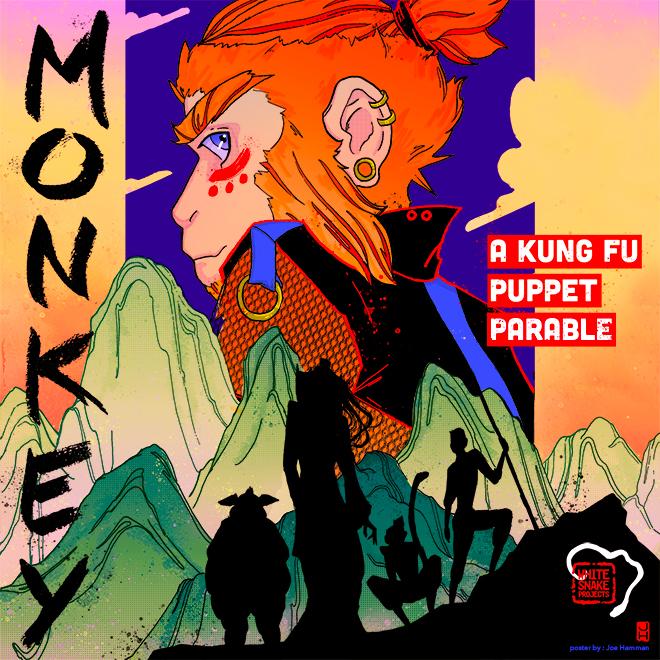
The tale has been adapted to many mediums over the centuries. Recently, Netflix released its own cartoon version called “The Monkey King” in August. And on Friday, the White Snake Projects activist opera company debuted the three-day world premiere of its opera based on the story “Monkey: A Kung Fu Puppet Parable” at the Emerson Paramount Center in Boston.
The original epic makes up four giant volumes, so Cerise Lim Jacobs, who founded White Snake Projects and wrote the script for the opera, said she had to choose which parts to include.
“I tried to figure out the essential elements of the story and distill it into a way that Americans could relate to, enjoy and be provoked by, in the sense of bringing up a lot of different things to think about,” said Jacobs, who lives in Boston and is originally from Singapore.
Jacobs not only blended the traditional with the modern but also intentionally chose a diverse cast and creative team.
“We’re trying to embody the whole multiculturalism of American society in this piece.”
“We’re trying to embody the whole multiculturalism of American society in this piece,” she said. “As a Chinese story, it would have been easy to commission a Chinese composer to write the music because, of course, every Chinese composer knows the story of ‘Monkey.’ But we chose instead to commission Jorge Sosa, who is a Mexican American composer.” (Sosa is based in New York.)
Jacobs added that Sosa’s music for their version of “Monkey” has inflections of Chinese music as well as Mexican and Latin music, and rock and American pop culture.
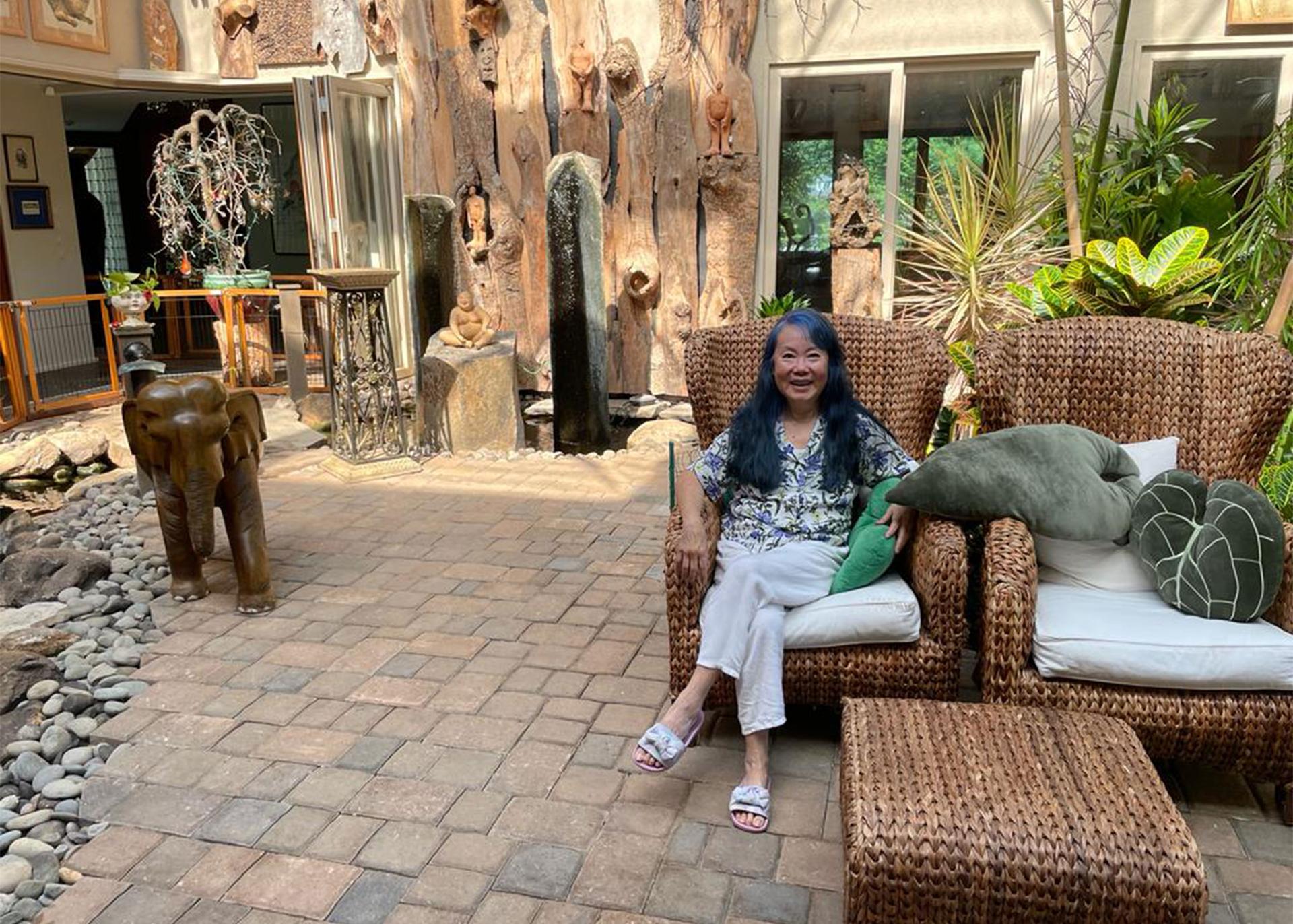
Beyond the music, the production features a style of bunraku puppetry from Japan, which has puppeteers on stage directly working with puppets. They’re dressed in black to blend into the background so the focus is on the puppets.
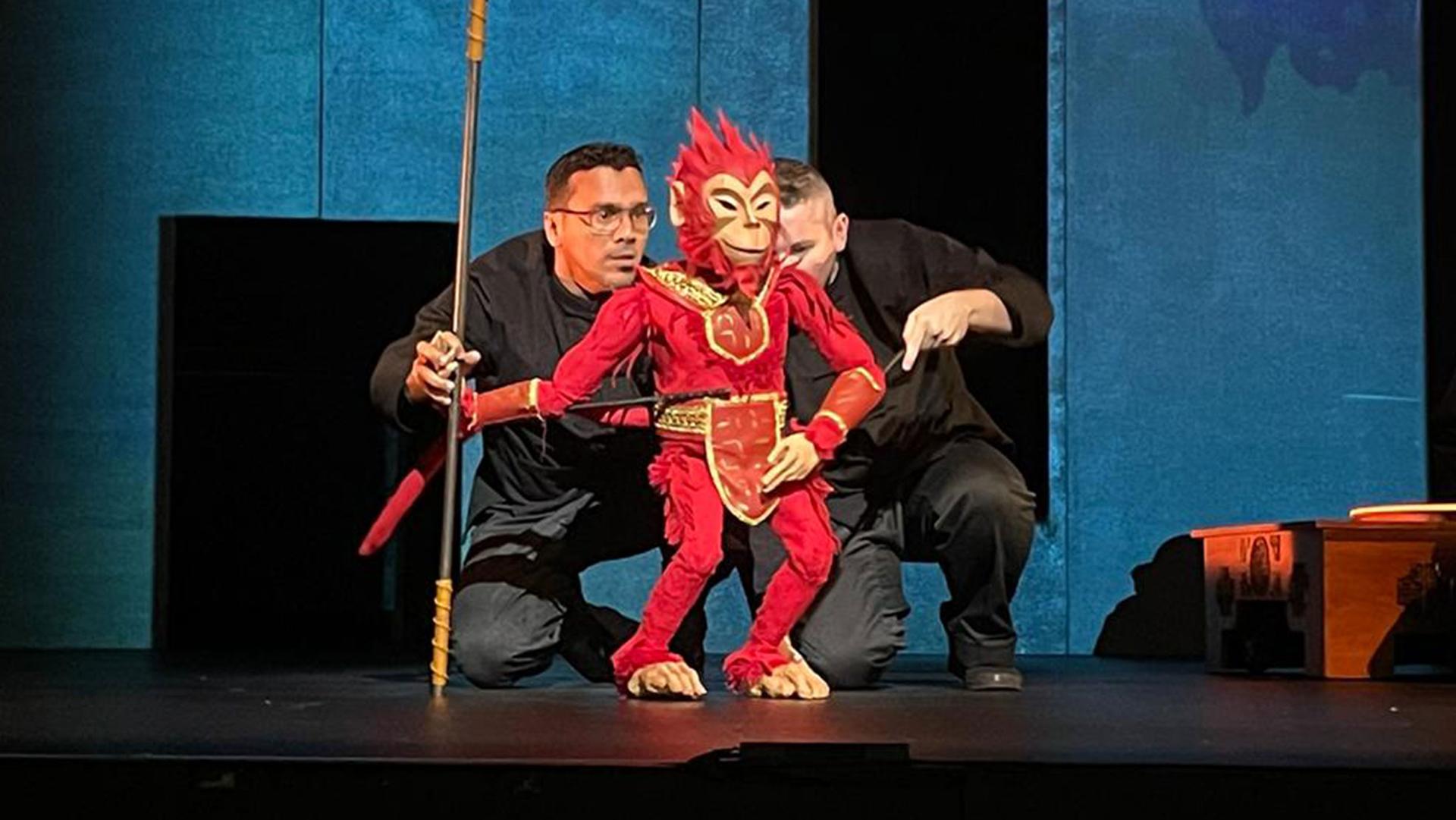
The production also uses computer-generated technology through CGI environs and avatars to provide backdrops and augment the performance.
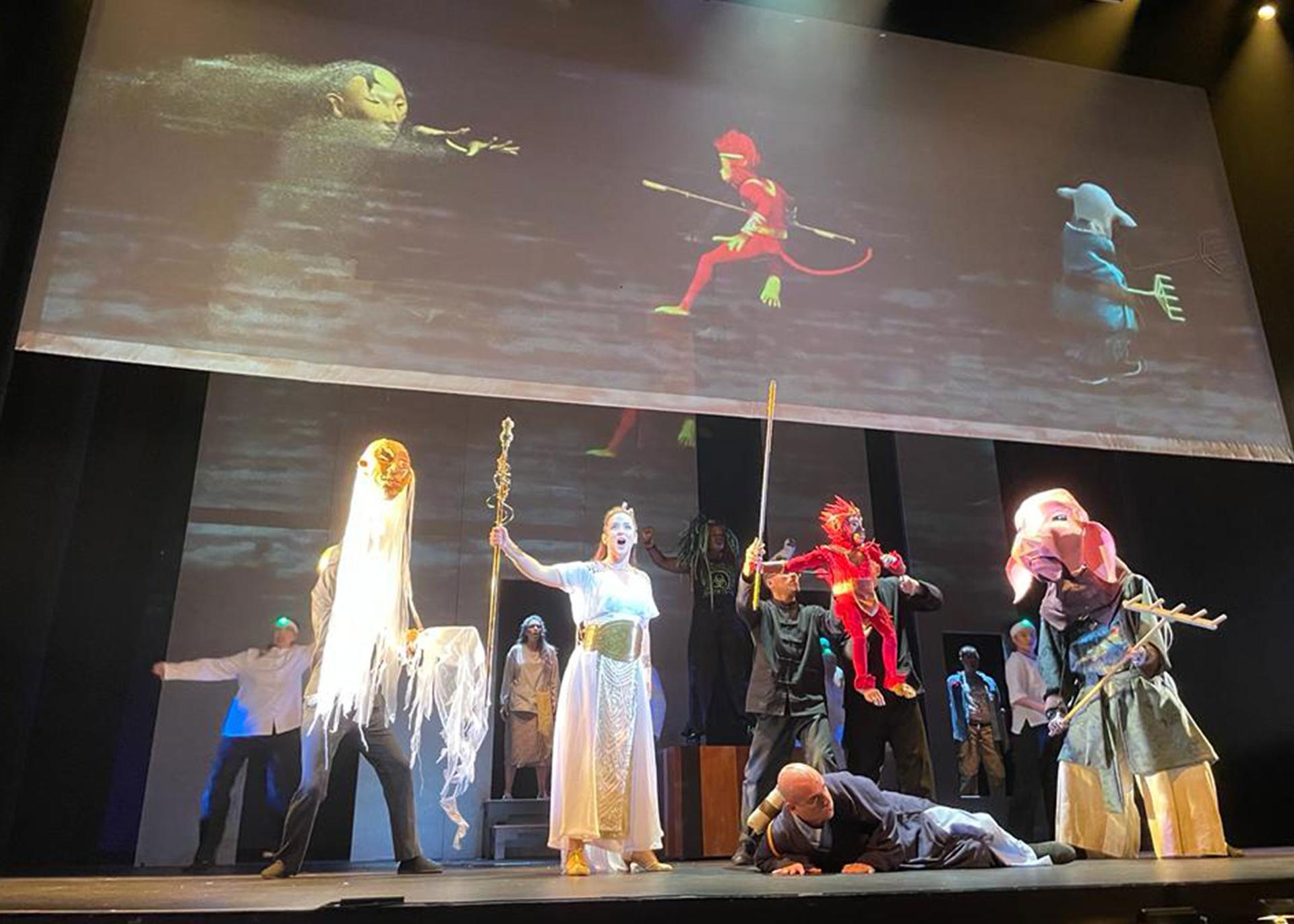
As for the characters on stage, they each have a puppeteer and someone who sings the lyrics — Zhu the pig has the voice of a Caucasian American, Sha the sand demon a Latina, while Monkey is performed by Chinese countertenor Chuanyuan Liu, who grew up in the northeastern city of Changchun in China.
Embracing a passion for music
Liu grew up with the story of “Monkey.” He said it was mandatory reading in schools and that there were plenty of formats to choose from to hear the story outside the classroom as well, including abridged novels, TV shows, cartoons and movies. There were even substories that focused on each of the characters.
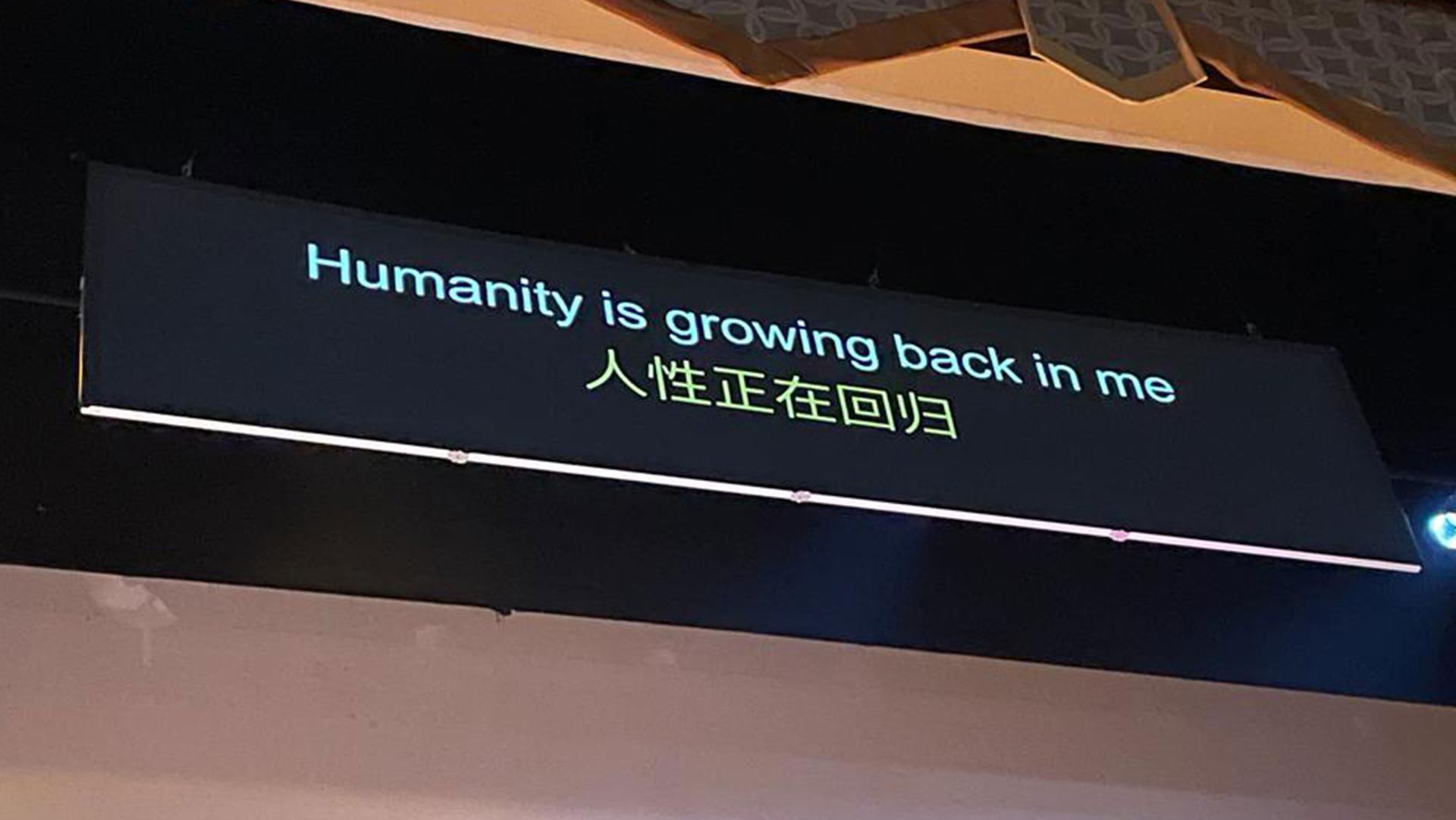
When he came to the United States for college, he had planned on studying computer science and said he knew nothing about classical music at the time. But, because he enjoyed singing, he signed up for the choir on campus.
He soon discovered he had a passion for music and went on to study at the Bard College Conservatory of Music in upstate New York and then also got an artist diploma from the University of Cincinnati. Liu, who lives in Washington, DC, has now been performing professionally for several years, and it was only natural for him to be a part of the opera production.
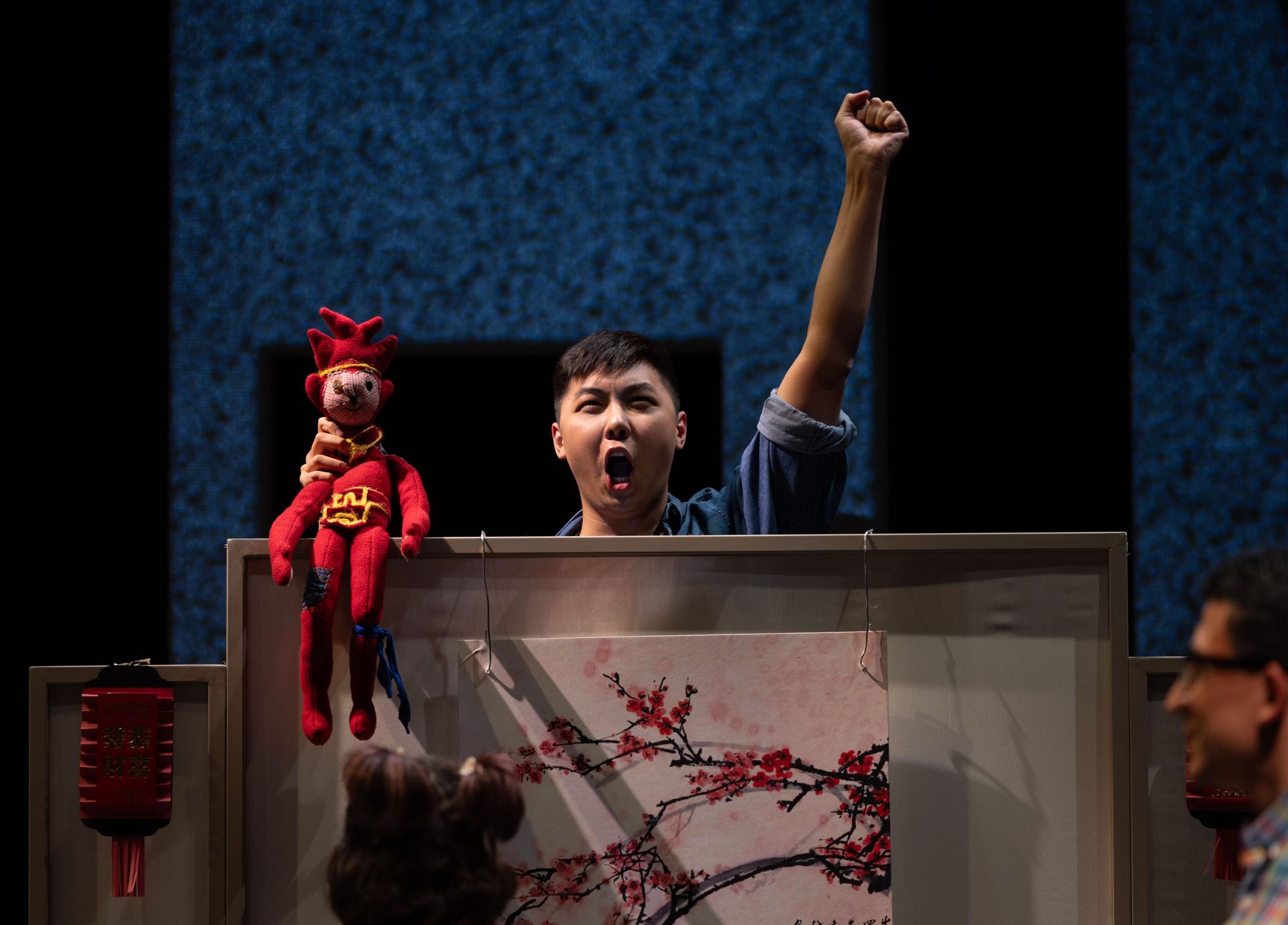
Liu sings in a rare high register as a countertenor, which is a biologically male singer singing in a traditionally female register. The idea is to re-create how a castrato singer would have sounded in the 17th century.
“It’s been really a fun time, learning the role, performing it and seeing it being [very] layered in this operatic form, having puppetry, having voice over,” he said. “It’s like all those little media that I grew up with kind of coming true one by one. And it’s just really, really fun to present this to a general audience.”
In fact, scriptwriter Jacobs said that the storyline of “Monkey” may sound familiar to an American audience.
“I found out that the American classic ‘The Wizard of Oz’ is actually based on “Monkey: Journey to the West,”” she explained.
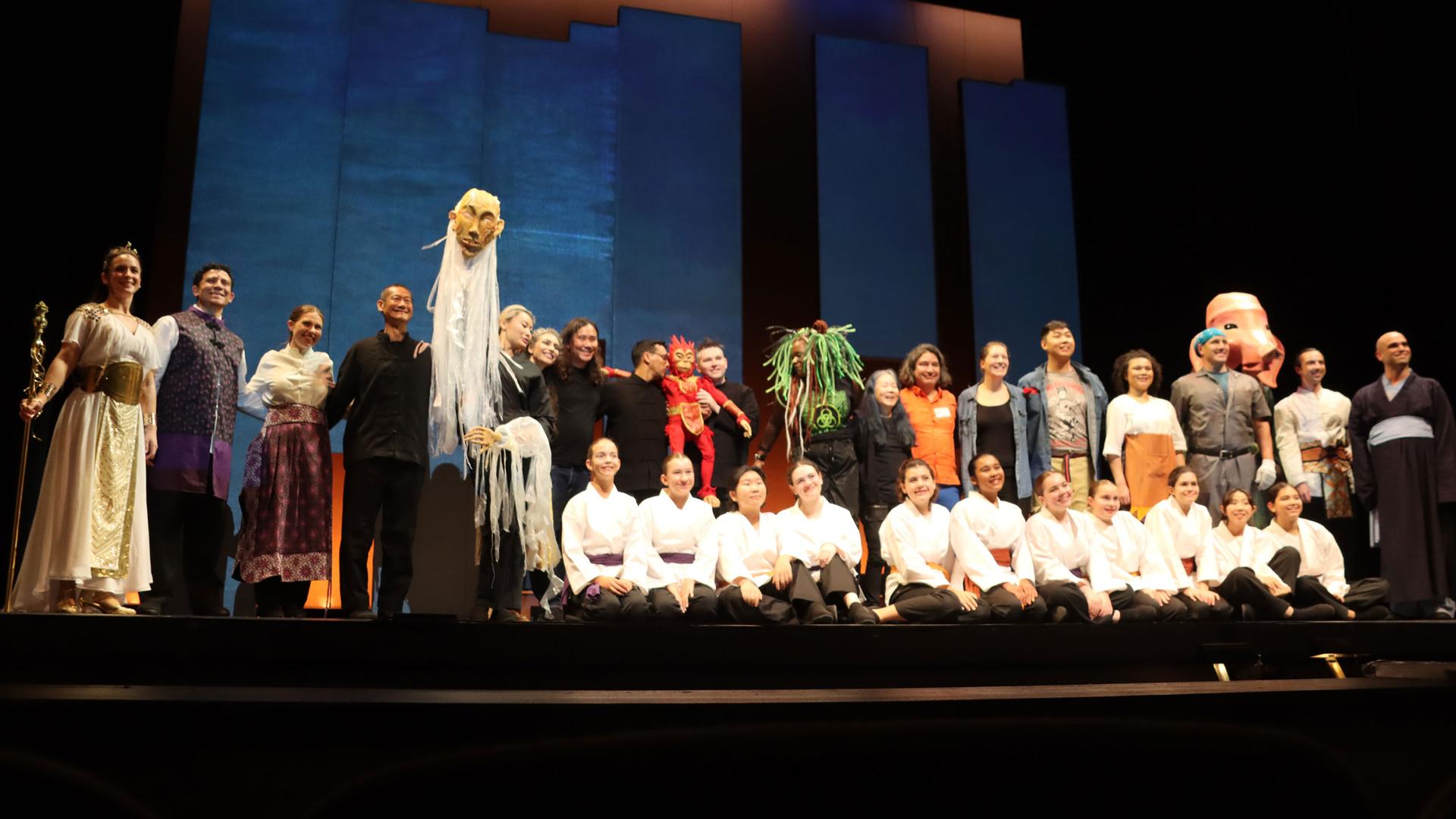
In “The Wizard of Oz,” there’s Dorothy, who is on a quest to find the Emerald City so she can get home.
And Jacobs said that “along the way, [Dorothy] meets three misfits, the Tin Man, the Scarecrow and the Lion. And they each have some deficiency that they perceive they have.”
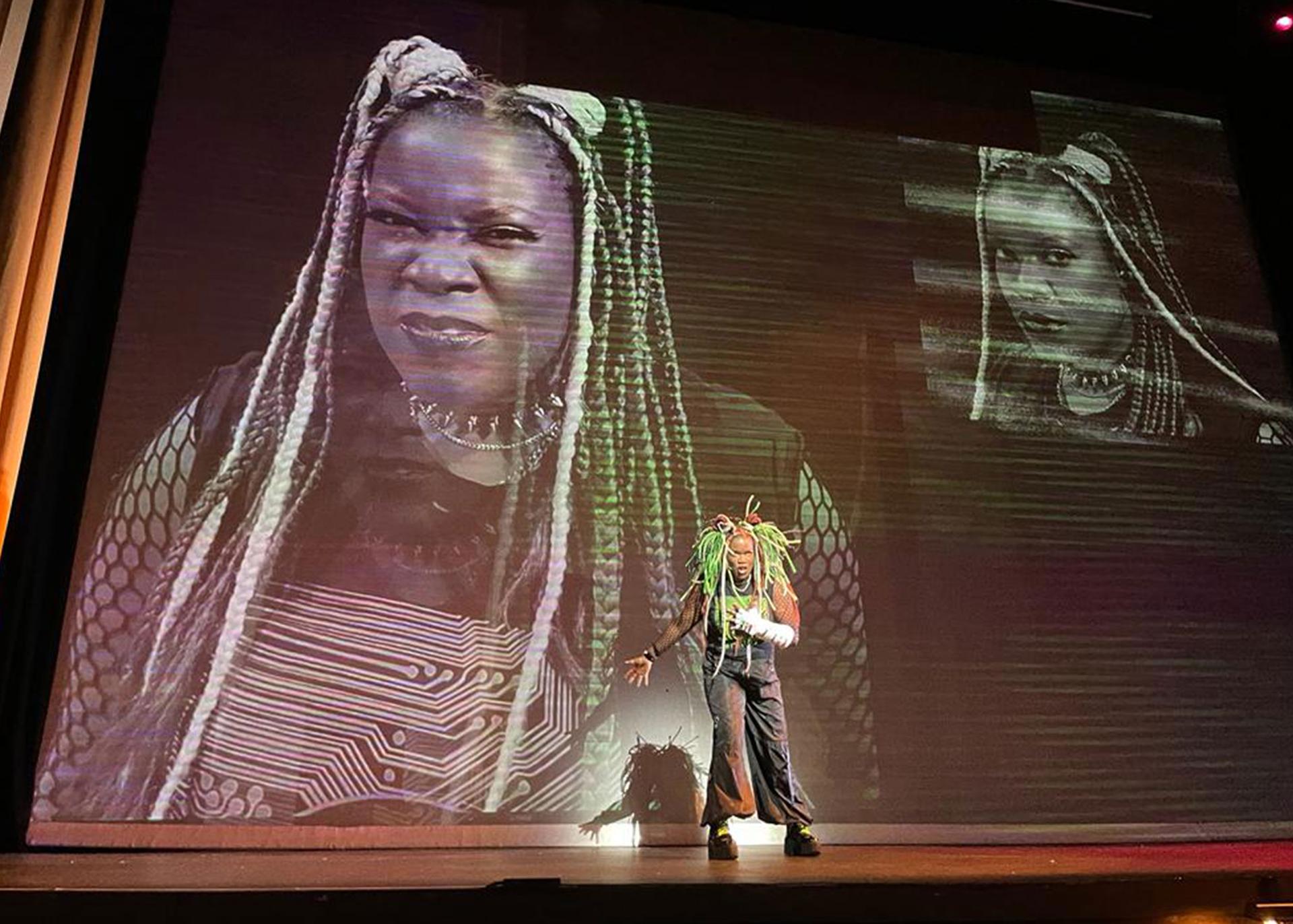
In the original “Monkey” story, the characters battle many demons along the way, which are all represented in the opera by Mara, who is a lot like the Wicked Witch of the West. And the “Monkey” characters are encouraged by Guan Yin, who is like Glinda, the Good Witch.
A Buddhist tale
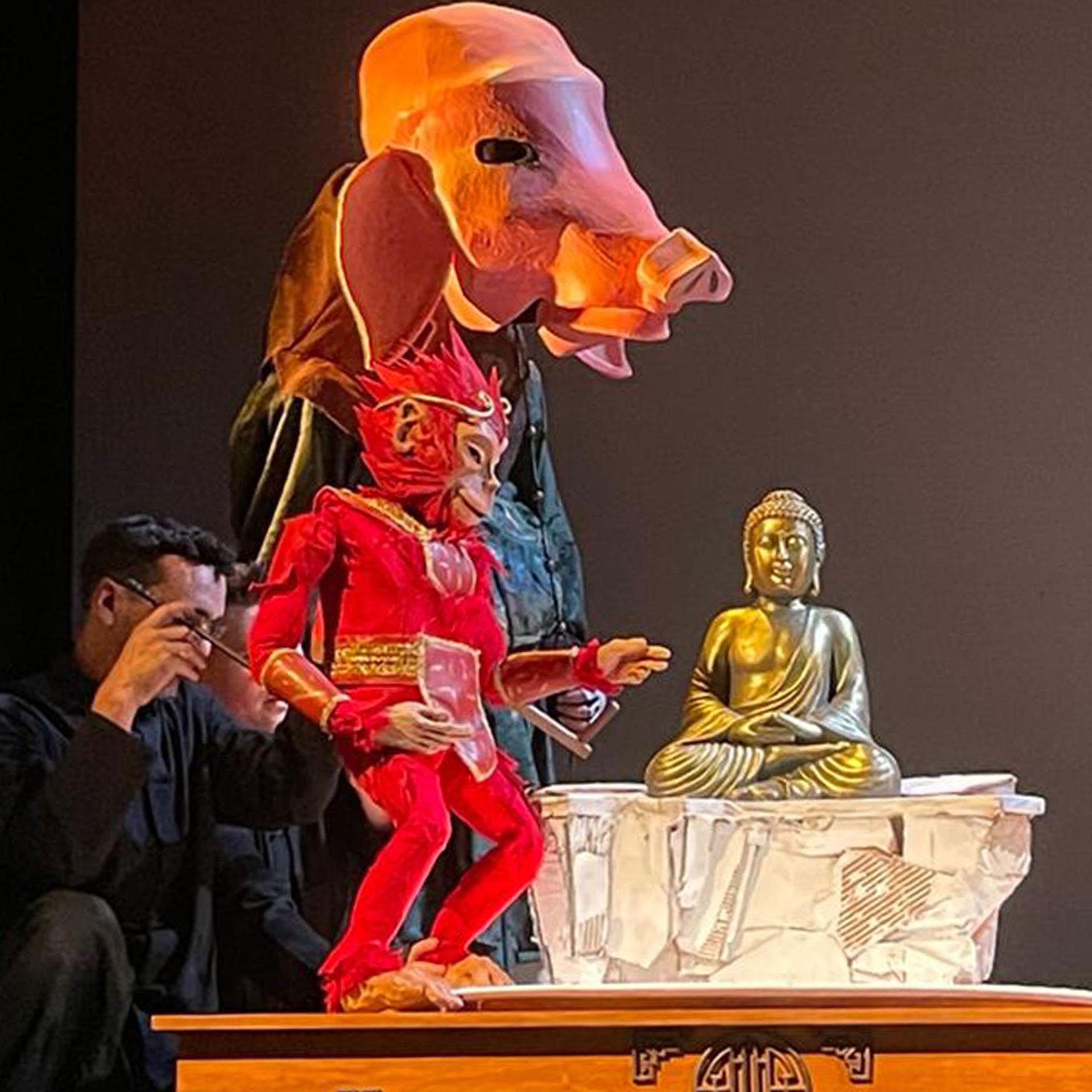
In the case of the monk, it’s a chance for him to redeem himself after standing by and doing nothing while a man was executed, thus making him complicit after having sworn to never take a life.
Roxanna Myhrum, a director for the opera, is Buddhist herself. She said she was drawn to the faith in college and spent a summer at a monastery in Taiwan. So, the production also has special significance for her.
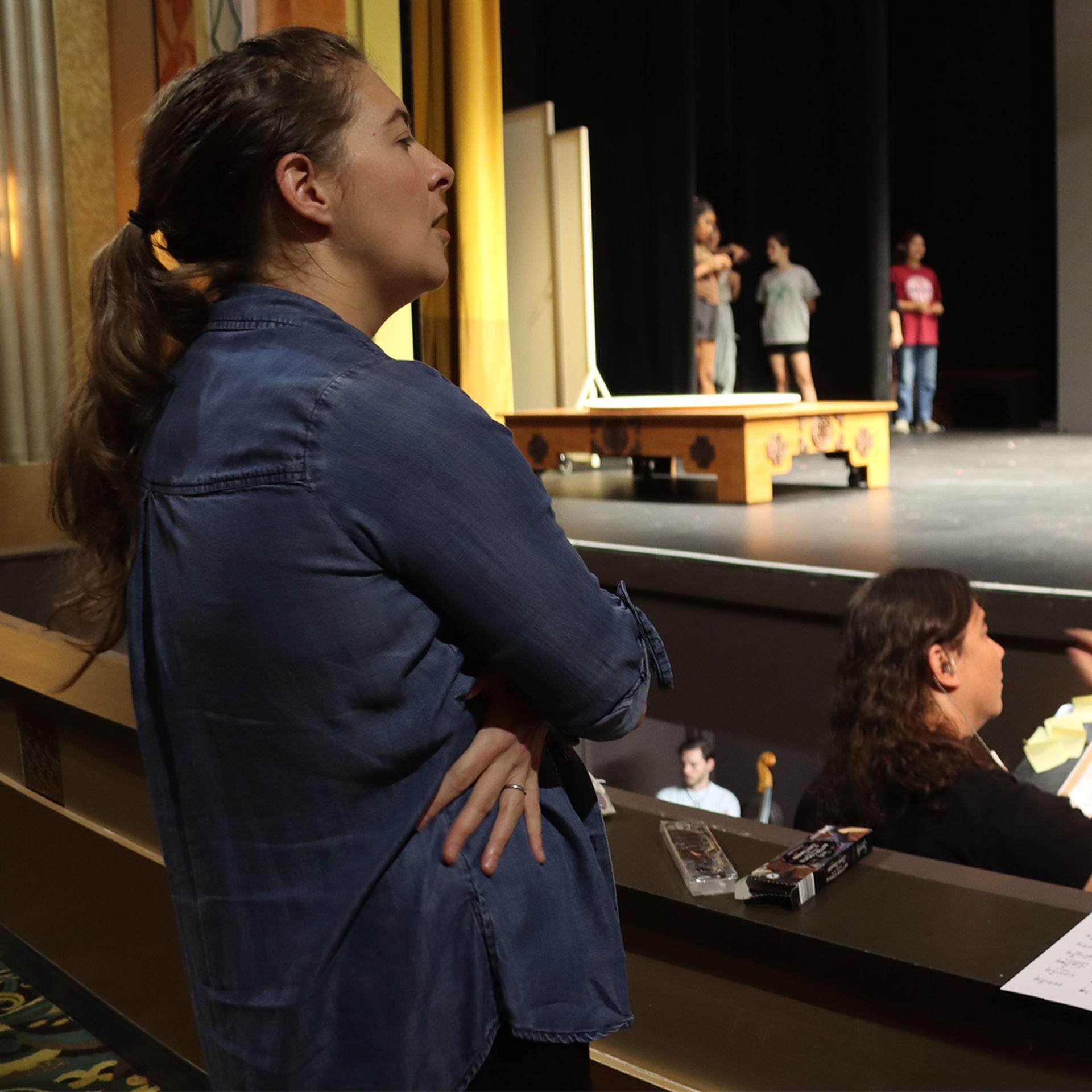
“I think one of the things that really stood out to me about this story and that resonated with the teachings of Buddhism is how Monkey finds his way into being part of a community where he’s essentially learning to use his powers for good,” Myhrum said.
At the end of the original fable, Monkey attains nirvana, the highest spiritual state of enlightenment in Buddhism.
But in the opera, Monkey ends up choosing his own path.
“What I think is really powerful is that by the end of the story in this adaptation, Guan Yin sort of is able to see Monkey for who he is and accept that he’s not going to follow the same path that she does,” she said. “And that message about making space for each individual to be themselves is also something that’s very powerful within Buddhism.”
Related: Series of reimagined African folk tales launches on Netflix
